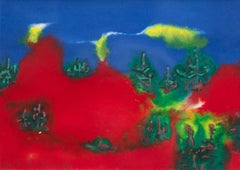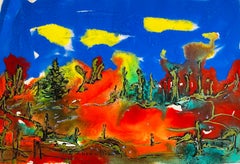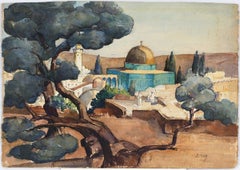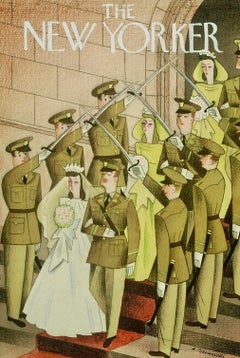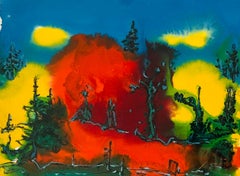Paul Vanier Beaulieu Art
Paul Vanier Beaulieu was born in Montreal, Quebec, in 1910. He was the son of Joseph-Alphonse Beaulieu and Augustine Vanier, the eldest of seven children. His father was a barrister who enjoyed painting as a hobby. Beaulieu studied a total of four years at the École des beaux-arts de Montréal at two different times from 1927–30 and 1936–37. His friends at the Beaux-Arts were Jean-Paul Lemieux and Stanley Cosgrove. Finally, he left art school after a skiing accident. Next, he opened a workshop for commercial art with Gonzalve Desaulniers who left the venture after a year. In spite of the economic situation of the 30s, Paul supported himself for six years. A chance meeting with a cafe owner led him to become a waiter in the cafe where he was allowed to show his paintings. When he saved enough money to travel, he made his way to Paris in 1938 and joined his brother Claude who had been there since 1935. He then purchased a studio in the Montparnasse section of the city. He took further studies at the École des Beaux-Arts in Paris in 1938. He continued to work in his Paris studio until the Nazi invasion in 1940. As a citizen of a country at war with Germany, he was placed at St. Denis, France, from 1940–44 along with his brother Claude, Canadian artist Jean Dallaire and 160 other Canadian citizens. He continued to paint during his internment. After the war, he went back to his Old Paris Studio and continued to work there until his return to Canada in 1973. His favored mediums were etching in drypoint and aquatint, watercolors and oils. He began working with graphics in 1951. Just a year later his aquatint etching of a woman was included in Paul Duval's book, Canadian Drawings and Prints, published in 1952. In his painting, he has had many diverse styles. His 1970s landscapes, traditional in subject matter, have irregular patches throughout the foreground that give greater depth to the overall composition. In others of his paintings, he verges on the non-objective. His still-lifes show some influence of Picasso. Exhibitions and Shows: Over the years he has exhibited his work in New York City, Mexico City, Rio de Janeiro, Paris and in Canada. His works are in major collections in Canada and France, as well as many private and public collections around the world. Beaulieu was retired in Saint Sauveur des Monts, Québec when he died in 1990.
1970s Paul Vanier Beaulieu Art
Watercolor
Mid-20th Century Canadian Paul Vanier Beaulieu Art
1970s Paul Vanier Beaulieu Art
Watercolor, Gouache
1930s Paul Vanier Beaulieu Art
Watercolor
1930s American Realist Paul Vanier Beaulieu Art
Gouache, Board
1940s Modern Paul Vanier Beaulieu Art
Canvas, Oil, Gouache
1890s French Antique Paul Vanier Beaulieu Art
Masonite
Late 19th Century French Antique Paul Vanier Beaulieu Art
Masonite
Late 19th Century French Antique Paul Vanier Beaulieu Art
Masonite
2010s Contemporary Paul Vanier Beaulieu Art
Ink, Watercolor, Archival Paper, Crayon, Wax, Acrylic, Color Pencil
Sophia Milligan'Towards Le Scathe Cove'. Contemporary Landscape, Rural, Sea, Ocean, Beach Blue, 2022
1940s Other Art Style Paul Vanier Beaulieu Art
Paper, Gouache
1940s Abstract Paul Vanier Beaulieu Art
Oil, Gouache
Mid-20th Century Paul Vanier Beaulieu Art
Watercolor
Late 19th Century Italian School Paul Vanier Beaulieu Art
Watercolor, Paper
1950s American Realist Paul Vanier Beaulieu Art
Gouache, Board
1970s Paul Vanier Beaulieu Art
Watercolor
